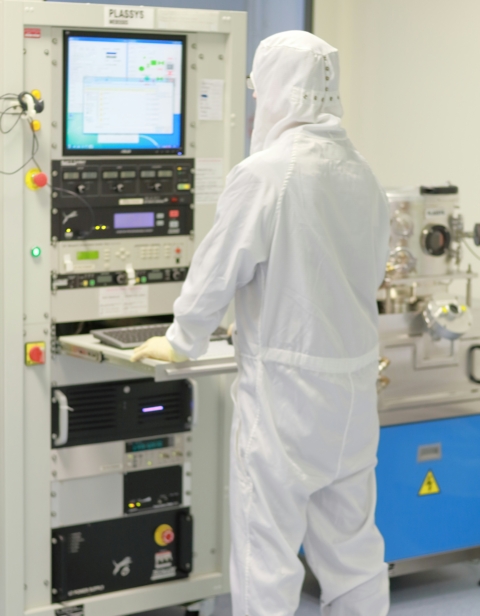
Tasked with developing ways to improve efficiencies, lower costs and ultimately improve the quality of public service, the Shared Service Centre of the Dutch Custodial Institutions Agency (DJI) has leveraged the simplicity and scalability of the UiPath automation platform to robotize up to 100 processes and achieve savings of 50,000 man-hours a year, whilst at the same time using a phased approach to build up an in-house team of Robotic Process Automation (RPA) developers (supported by RPA developers from implementation partner Specialisterren) that can assist with further innovations in the future.
The Dutch government’s Custodial Institutions Agency, DJI, not only has the responsibility for detaining convicted individuals in order to ensure that justice is served in accordance with court verdicts, but also must successfully manage the day-to-day care of detainees and support their rehabilitation and reinsertion into society.
Headquartered in The Hague, the agency is divided up into three main divisions (such as prison administration, forensic care, and individual affairs) and also offers a number of ‘national services’, that support the DJI in its work (ranging from prisoner and detainee transport to spiritual care to forensic psychiatry and psychology).
A key component of these National Services offered by the DJI and critical to the infrastructure of the agency are two Shared Service Centers (SSCs) – the so-called SSC ICT for ICT applications and management and the SSC DJI for Finance, Procurement, and Human Resources and Facility Services.
Faced with the double challenge of having to work with legacy systems and lacking qualified personnel to cope with increasing workloads, the SSC DJI decided in 2018 to embark on an automation journey using the UiPath RPA technology, primarily in order to accelerate response times, reduce errors and increase process efficiencies.
Frank de Jonge, former General Director of SSC DJI declared that “We’d been told that RPA was the golden egg for optimizing processes at low cost and increasing the quality of service so we decided to run an initial test or Proof-of-Concept to see if the technology lived up to its reputation”. Their question was – does automation work in the organization and was it worth developing further? Did it have enough potential? “The first results were so positive that we decided to take the plunge and go ahead with a bigger roll-out across the organization and in various processes”, said de Jonge.
We decided to run an initial test or Proof-of-Concept to see if the technology lived up to its reputation and the first results were so positive that we decided to take the plunge and go ahead with a bigger roll out across the organization and in various processes.
Frank de Jonge • former General Director of SSC DJI
Wouter Derksen, DJI SSC’s Innovation & Business Development Manager, adds that “we started with one or two proofs of concept because it was important for us that we designed for scale from the beginning. We leveraged as much as possible the low code/no code feature of UiPath to train developers ourselves, so that the end result was not just a successful pilot RPA project, but a fully developed team with capabilities that we could use and share in-house. We adopted a ‘start small, organize big’ approach where we had the skill sets in mind from the outset, which gave us peace of mind, comfort, and a better view of the impact and consequences of deploying RPA”.
“In addition, we have spent a lot of time involving people and organizations, which has resulted in a broad understanding of the objective of the implementation of RPA: improving the quality of services. In the process our employees developed digital capabilities to prepare themselves for the future as well ”, says Derksen. This improvement in service quality was paramount for the team and one of the key triggers for starting the automation journey. There were numerous administrative processes that should be easily accessible to citizens of the Netherlands (or what DJI calls ‘their clients’) but instead were a source of frustration because of problems such as limited calling hours or because it was difficult to obtain updates on the status of a specific request or application for documents.
We spent a lot of time involving people and organizations, which has resulted in a broad understanding of the objective of the implementation of RPA: improving the quality of services.
Wouter Derksen • Manager Innovation & Business Development, SSC DJI
Frank de Jonge said “We started our automation journey with the aim of increasing the capacity of the organization to improve service levels through standardized, high-quality processes that operate 24/7. By reinvesting the time we saved through using RPA in order to achieve quality and process improvements, the culture of continuous change became normal and to this day provides a foundation for the reliability of our services, so we can serve not only more clients but also serve them better”.
Shortlisted for Government Innovation Award
Fast forward to 2022 and DJI’s SSC has just celebrated the development of its 100th RPA robot and calculates that they reallocated an average of 35 FTEs or 50,000 hours per year through RPA. The project was even shortlisted as a finalist last year for the Dutch ‘Best Government Innovation of the Year 2021’ award, a nomination that Wouter Derksen and his team are immensely proud of.
Best of breed examples of processes they have successfully automated include processing phone credits for prisoners when the global coronavirus pandemic hit the country. Inmates weren’t allowed to have any visitors anymore due to COVID restrictions so it was decided to give them all extra credits on their phone accounts to use Facetime to call their family and relatives. By automating the process of adding phone credits for 15,000 inmates on the system, the SSC was able to make those credits available in three days, when doing it manually would have taken them three weeks. Not making the inmates wait nearly a month for credits was not only something positive for the prisoners’ well-being but also ensured greater safety and security within the prison population.
Another example of how they used RPA to improve services offered to ordinary citizens, in general, was in the process of issuing certificates of ‘Good Conduct’. Many jobs in the Netherlands nowadays, such as taxi driver, or working with children, require this certificate to be issued to the individual to confirm he or she has no criminal record. The SSC managed to robotize the process for DJI to the point that they apply for a certificate within an hour instead of having to wait three days as before when the process was managed manually.
Creating Social Impact
The development of the robots themselves is also a way that the DJI’s SSC could ensure social inclusion practices are adhered to as well. “We have a team of eight developers of which five are employees of the agency whilst the others come to us from external suppliers such as Specialisterren, a UiPath implementation partner and social enterprise in the region, who actively employs people with certain forms of autism, thereby giving them an opportunity to be part of the labor force and improve their quality of life”, says Wouter Derksen.
Ernst Kolvenbag, RPA Program Director at Specialisterren, agrees. “Our team members have a form of autism, and skills that we define as great talents that fit perfectly with RPA development. It enables us to partner with DJI to support them in their automation journey, but the result of this partnership is also to create social impact. We are proud to both be organizations with social impact, and to strengthen each other’s impact”.
Change Management
Designing for scale is good in theory but for it to work in practice, one needs to understand what the workforce thinks of automation and how likely they are to embrace the technology as something positive for them. The DJI SSC worked hard in collaboration with external partners, including UiPath, and the University of Utrecht to study attitudes towards digital transformation not only amongst the general public but also with the agency’s staff.
Part of this research included a test where employees from one of DJIs largest departments, Finance, were asked how they felt about their job, job security, and details of the type of task they did before and after the introduction of RPA.
“The results of the survey were actually quite surprising for me,” says Wouter Derksen. “I thought that they would express concern about losing their job or be worried about not working as much anymore. But in fact, we saw that staff were really happy working with automated processes because it meant that they had more time to help customers and to do the more creative and problem-solving tasks, making their job more challenging, and thereby more satisfying, with RPA than before”.
We saw that staff were really happy working with automated processes because it meant that they had more time to help customers and to do the more creative and problem-solving tasks, making their job more challenging, and thereby more satisfying, with RPA than before.
Wouter Derksen • Manager Innovation & Business Development, SSC DJI
The results of the research were crucial for the DJI SSC team to communicate the benefits of the RPA technology across the organization, and great support in the process of stakeholder management, including securing the support of the agency’s ICT SSC. “Implementing new technological applications, and thereby changing the current work processes, requires the necessary organization to take employees, managers, and the organizational structure with them to the new practice, and sound change management is critical for this to happen,” explains Frank de Jonge. Starting small and building for scale enabled DJI to draw up a change plan right at the beginning which describes how the changes can be supported and ensure they run as smoothly as possible.
A phased approach, in which there is time to train and guide employees through the change, helped with this. During the early PoC phases, employees were continuously informed and involved, so that the upcoming change was better understood and from the moment employees knew what robotization meant for them, it could be gradually expanded.
Digital-first Processes
Looking ahead to the future, Wouter Derksen predicts that there will be a complete decentralization of the automation of processes where digital-first processes are developed and managers become ‘orchestrators. That’s to say they will see a process completely digitized before them on a monitor and can see how much workload there is in each step, whilst also visualizing what real work is being done during individual steps.
Ernst Kolvenbag from Specialisterren says that they normally view an automation journey in three stages. After the pilot/discovery phase comes the second where an organization now understands RPA, is organizing it, and scaling it up. “The DJI SSC is in the second stage,” he says, “but moving quickly towards the third. In other words, they are asking ‘What else can we do to stretch automation into doing even more? We fit perfectly to support organizations in phase 2 for scaling up and phase 3 to bring automation to the next level’”.
The DJI SSC is moving quickly towards the third stage of their automation journey. In other words, they are now asking ‘What else can we do to stretch automation into doing even more?
Ernst Kolvenbag • Program Director RPA, Specialisterren (UiPath partner)
Follow this link to the article as it was published…



